
One reason I love to travel is the visual excitement of new places, new things to see. I loved exploring Angra do Heroismo in the Azores Islands last year. Amazing views at every turn. This image may find its way onto a wall in my home.
Views of Sequim, the Olympic Peninsula. . .and beyond

One reason I love to travel is the visual excitement of new places, new things to see. I loved exploring Angra do Heroismo in the Azores Islands last year. Amazing views at every turn. This image may find its way onto a wall in my home.

It’s easy to forget there’s an entire city beyond the Capitol Mall in Washington D.C. But it was time to go home before we knew it. There’s always so much more to explore…
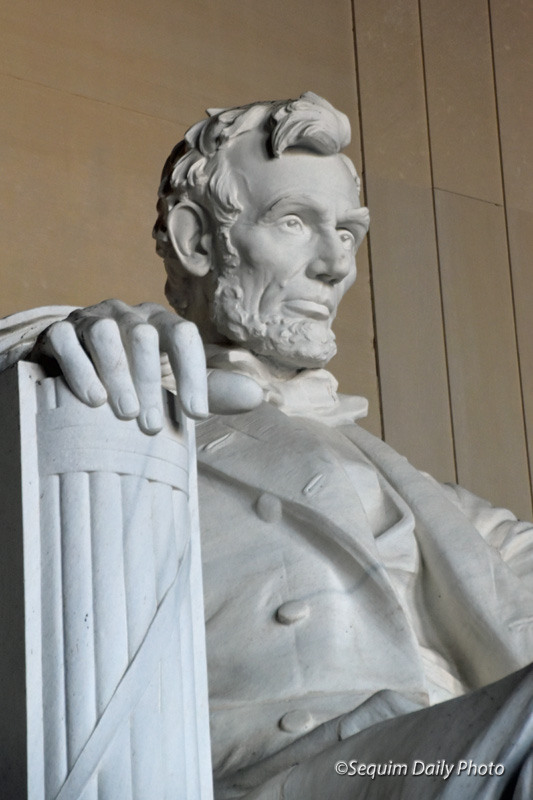
No visit to Washington D.C. is complete without a visit to the Lincoln Memorial. The Washington Memorial, not far away, pierces the sky with a tall, stark spire. The Lincoln Memorial allows a visit with the man himself. I shared my time with dozens of other visitors but it still felt personal. I asked him about the crazy times we live in. This is what he said:
“We are not enemies, but friends. We must not be enemies. Though passion may have strained, it must not break our bonds of affection. The mystic chords of memory will swell when again touched, as surely they will be, by the better angels of our nature.”
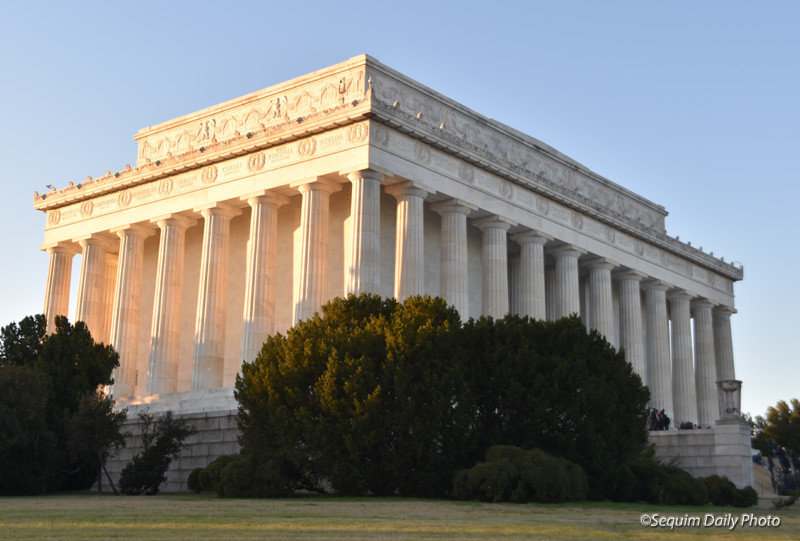
Our country would be immeasurably different had Lincoln lived.
It’s a beautiful memorial.

One of the chief reasons I wanted to visit Washington D.C. was to visit the Smithsonian National Museum of African American History. It was opened in 2016 to much acclaim, a gorgeous building and an important collection.

After three years the crush of visitors is still so great that timed passes are needed for admission on weekends. Luckily for us we could arrive without a pass on our last full day in Washington; unluckily, we were bone tired by the time we got there. And it’s a museum that warrants more than a single day trip.

We began our visit on a top floor with African American contributions to U.S. culture. Music, drama, dance. And insights into African American culture and life. We thought we’d work our way down from the top.

There was so much to see. At lunch we discovered we were going in the wrong direction. History began with two underground concourses that gradually rose to ground level. By the time we emerged we were glassy eyed. I wish we’d had much more time but it’s a great excuse to go back.
Click here for more information on the building and its history.
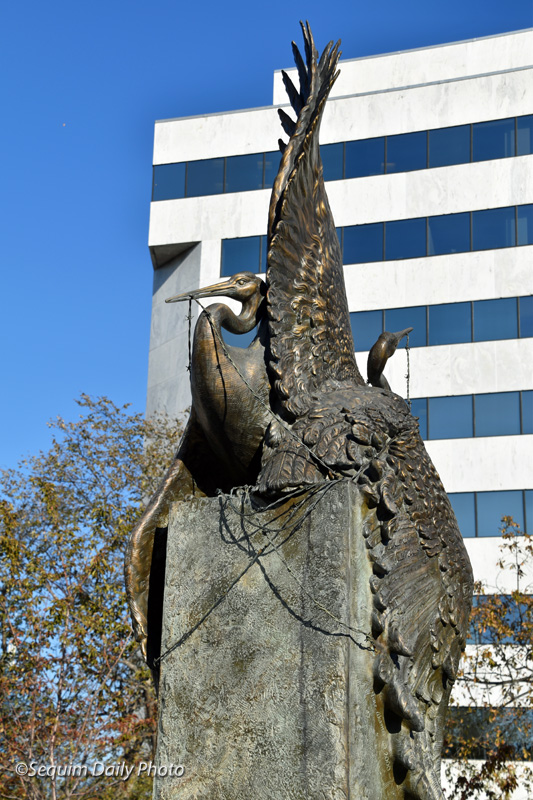
There is a quiet, low key memorial to the internment of Japanese Americans during World War II in Washington D.C. A curving, austere wall to one side is inscribed with the names of internment camps where people of Japanese ancestry were imprisoned from 1942 to 1945. This statue of cranes imprisoned in barbed wire is at its heart.
Along the wall is an inscription: “The lessons learned must remain as grave reminder of what we must not allow to happen to any group.” Daniel Inoye, U.S. Congressman, Senator, and Captain, 442nd Regimental Combat Team.
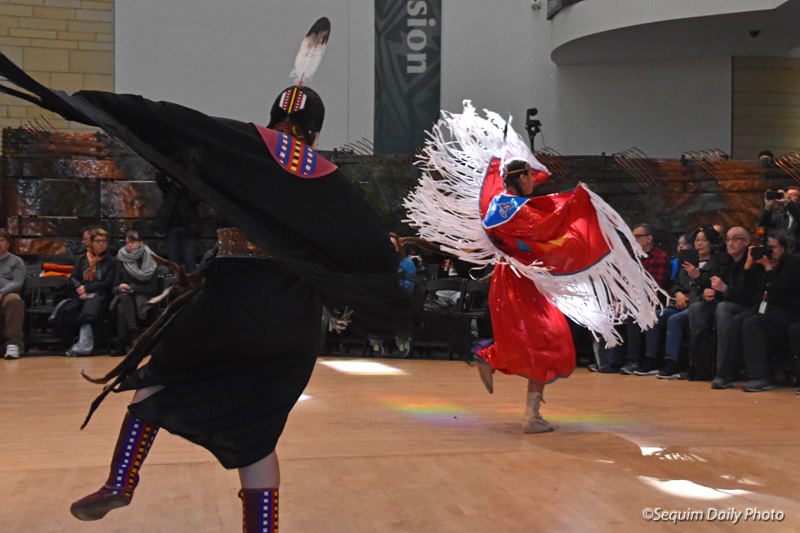
After a procession of the Blackfeet Tribal dancers at the Smithsonian National Museum of the American Indian (NMAI) last month, short dances were performed by small groups of women and men.
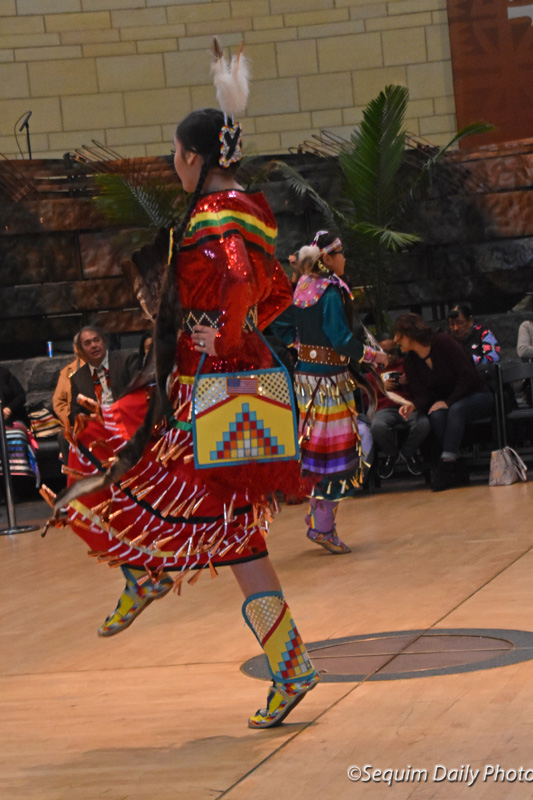
This was a jingle dance. Those bright little cylinders on the dresses are metal pieces that rhythmically sounds as the dancers move. A group of drummers sang and beat rhythms on a large drum to accompany each dance.
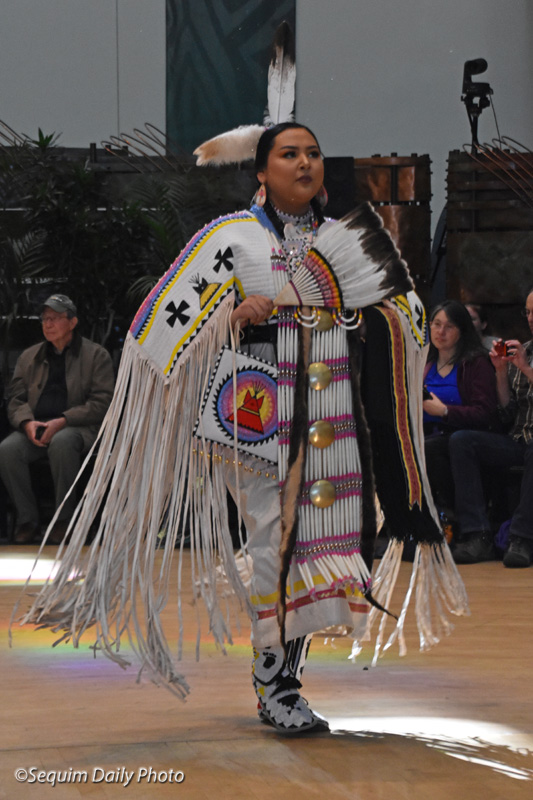
The beautiful regalia flowed and enhanced each of the different dances, as all the while the drummers and singers kept time.
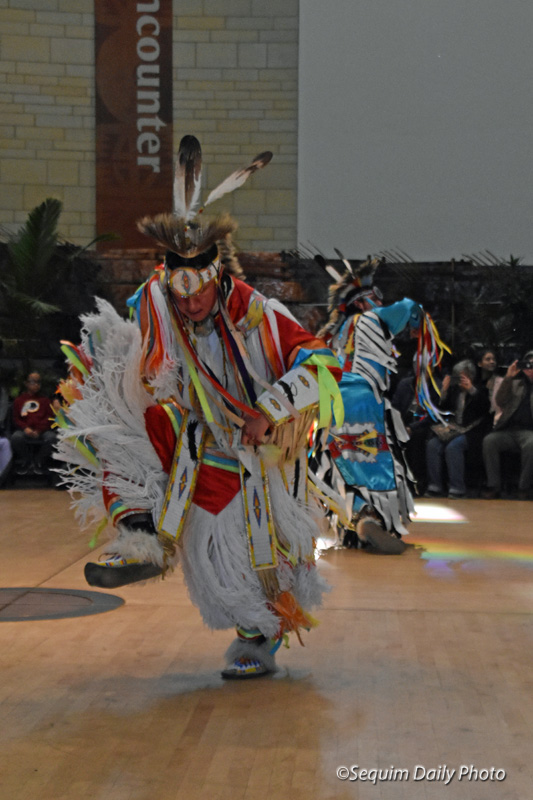
The dances were short and energetic. This one was a dance typically done in an area before a pow wow where men would dance through fields to flatten and prepare grasses for other activities. I wish I’d taken notes about all the dances.
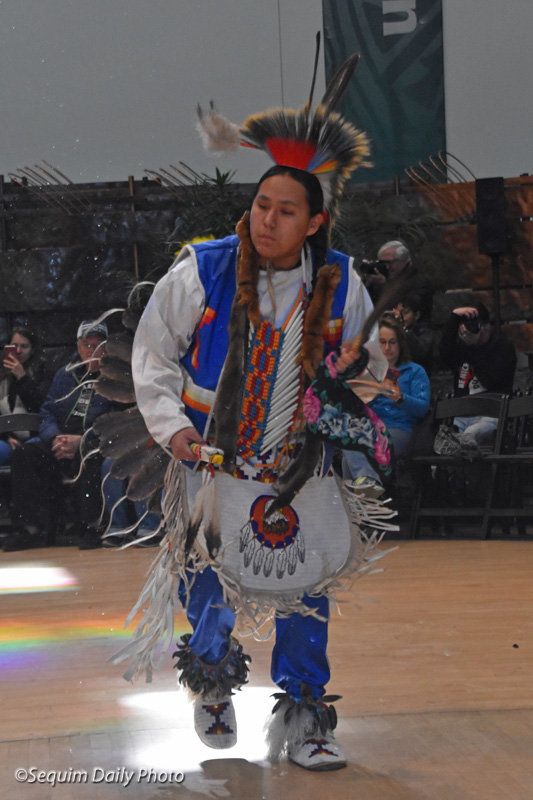
We hadn’t expected to see a performance like this when we went to the NMAI. We felt privileged to see it.
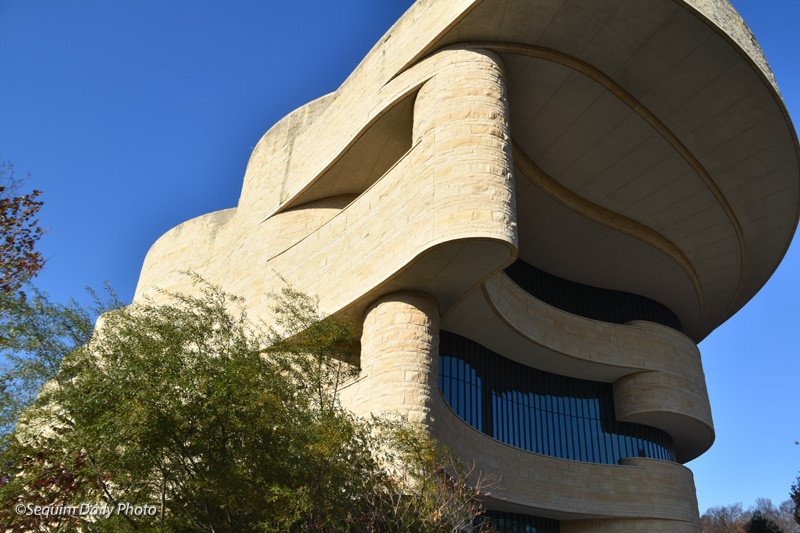
We last visited the Smithsonian National Museum of the American Indian (NMAI) 15 years ago. It hadn’t been open long. Then, as now, the building and its contents were stunning. This visit we arrived to an uncommon treat. The Blackfeet Nation had come to NMAI to put on a dance performance.
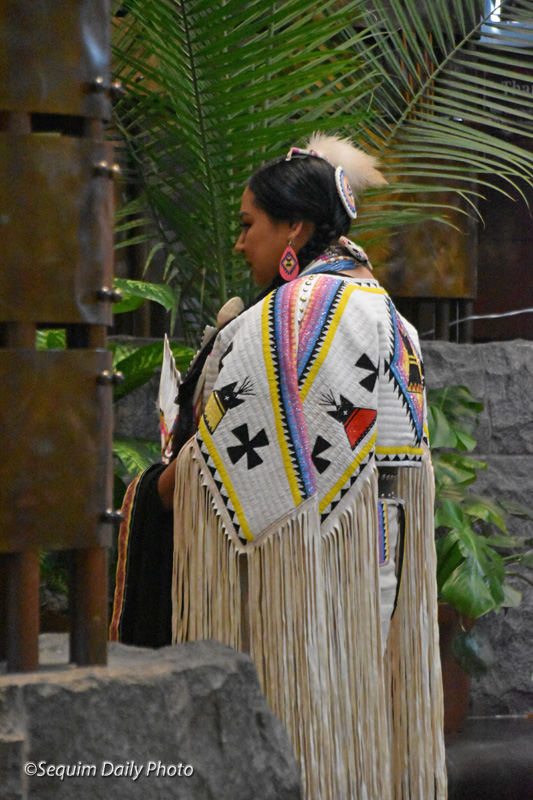
We arrived early enough to claim good seats as dancers came out before the performance. This was a special treat because the dancers’ regalia was spectacular.
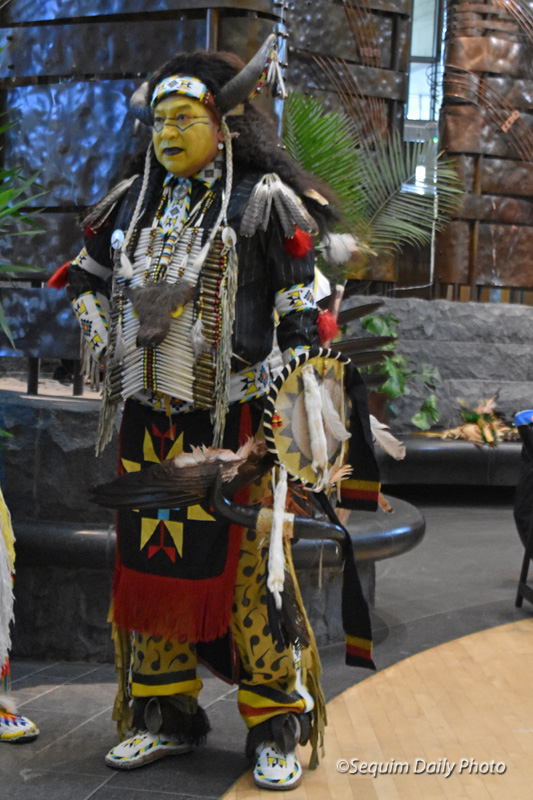
The beading, embroidery, and materials used in these outfits was gorgeous. Feathers, fur, quills, horns. This was Indian Pride at its finest.
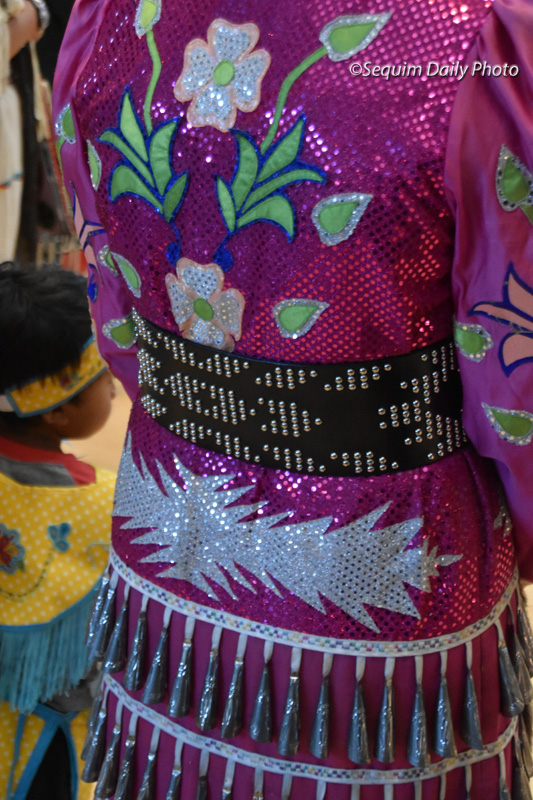
I’ll next show you some shots from the short performances that we were privileged to see.